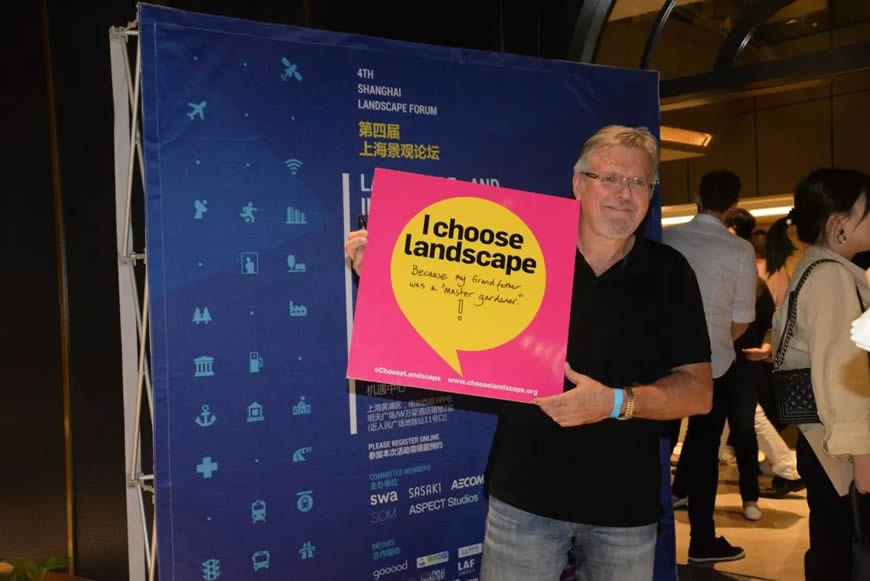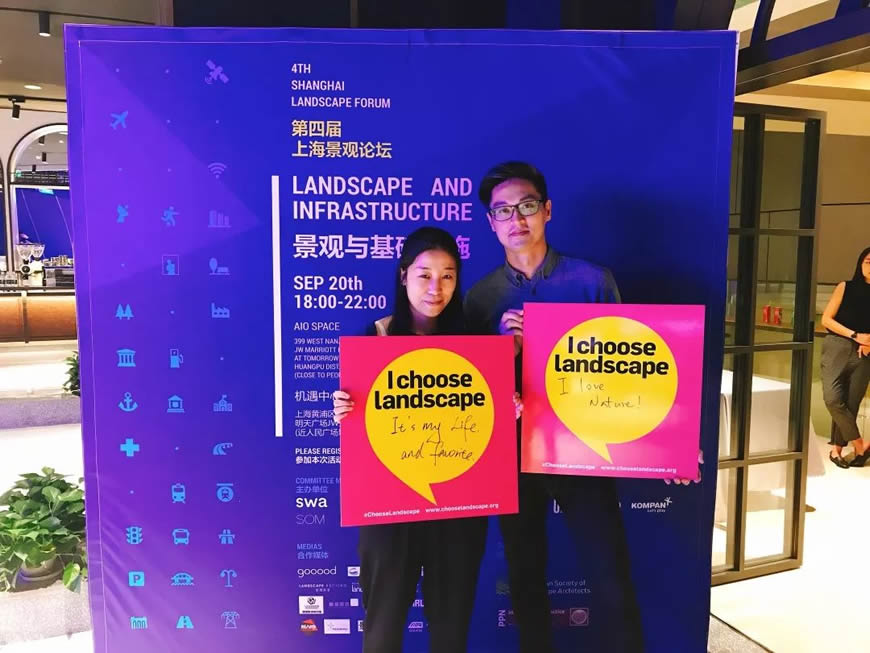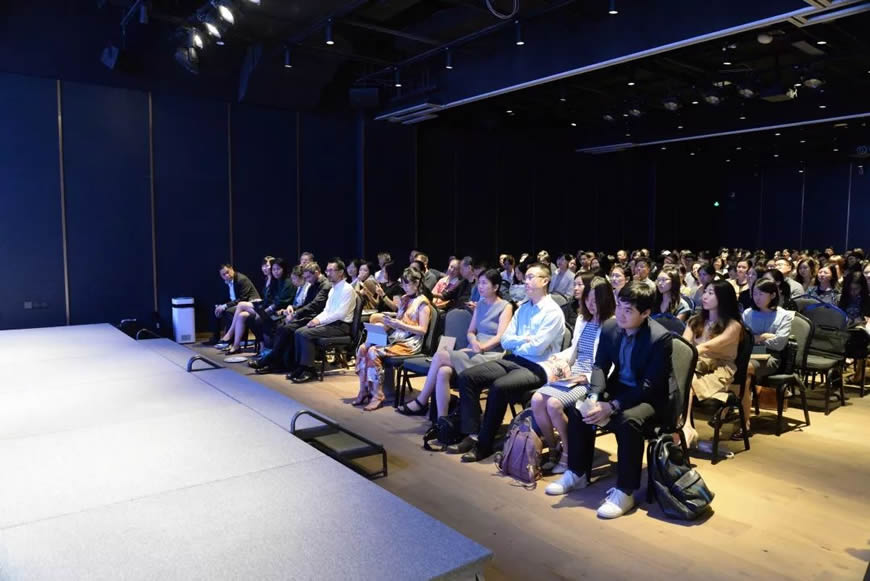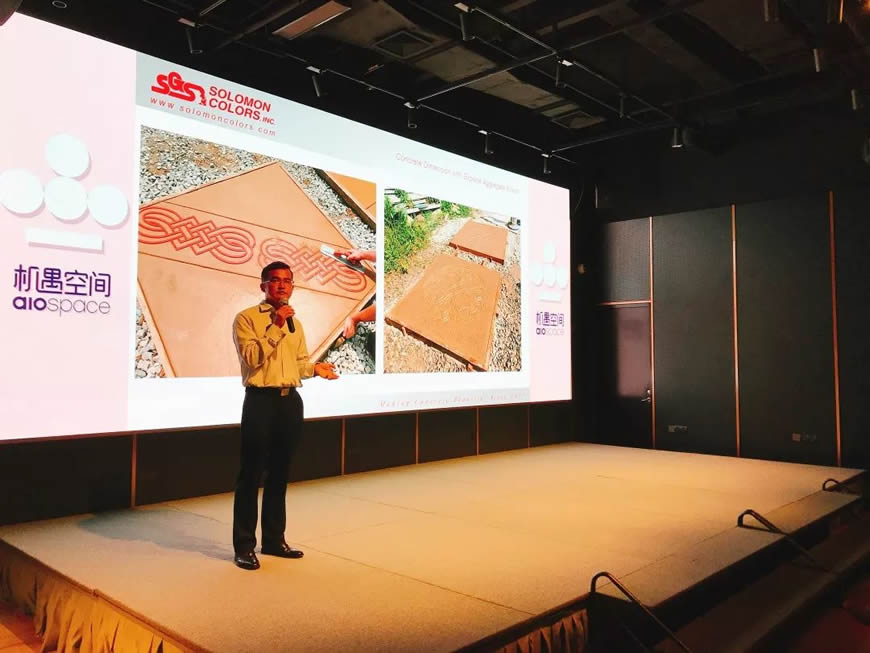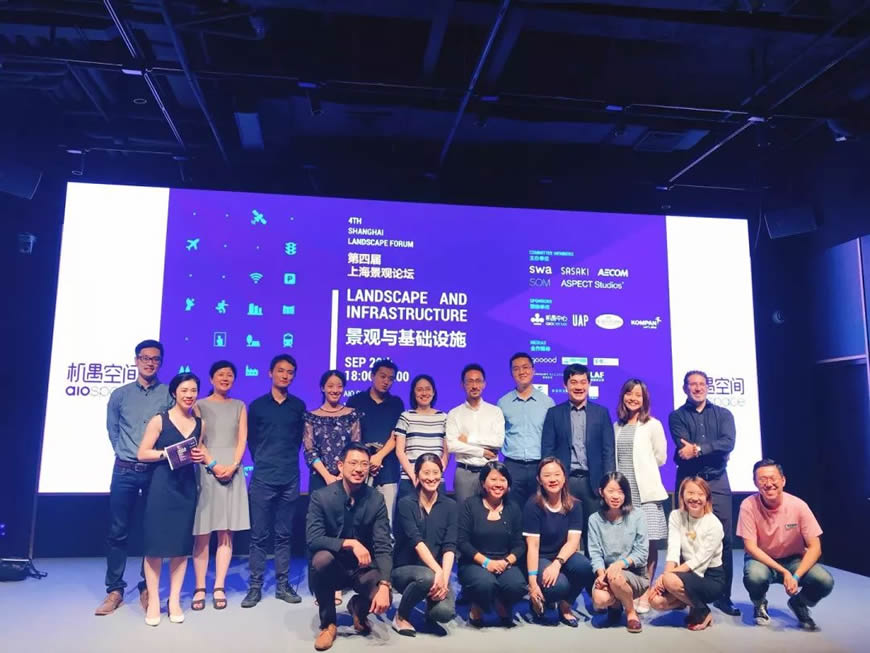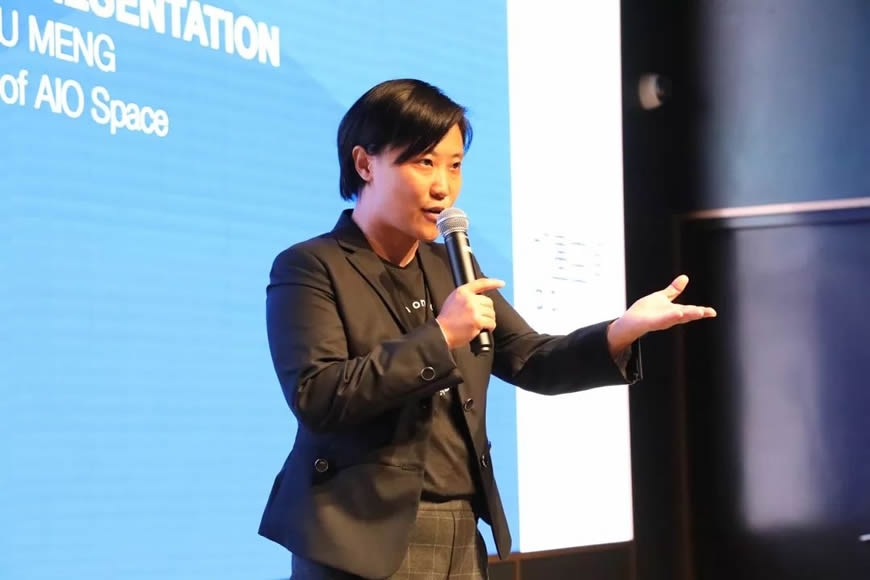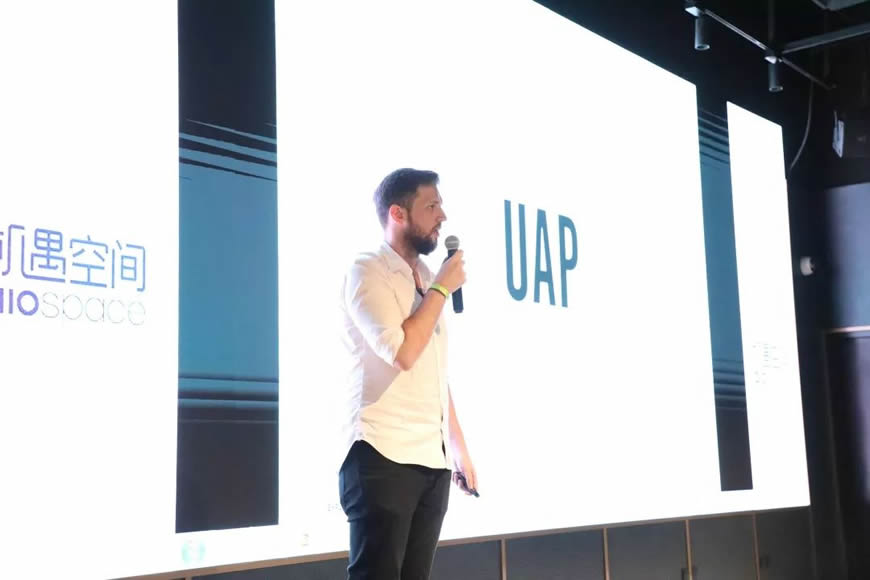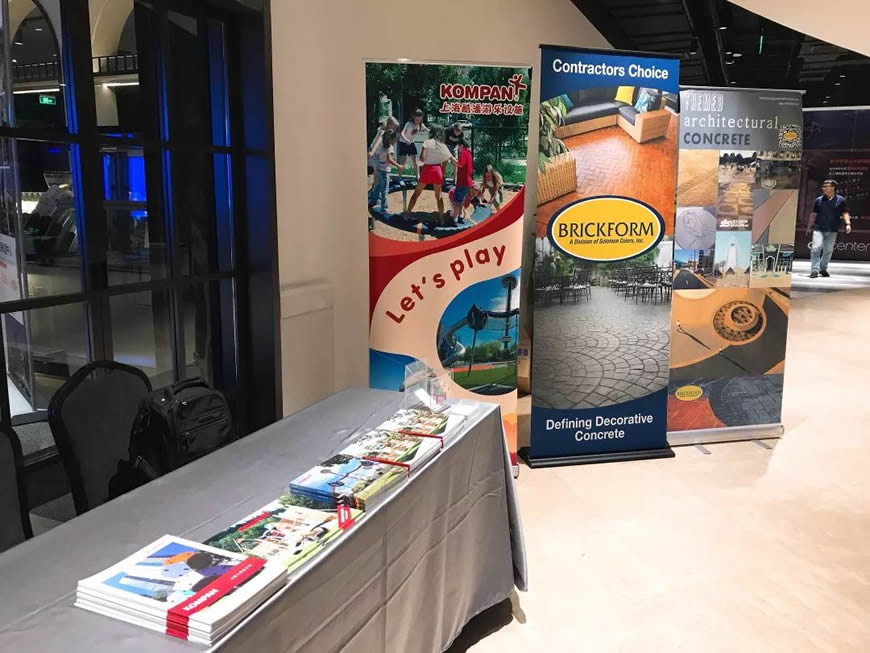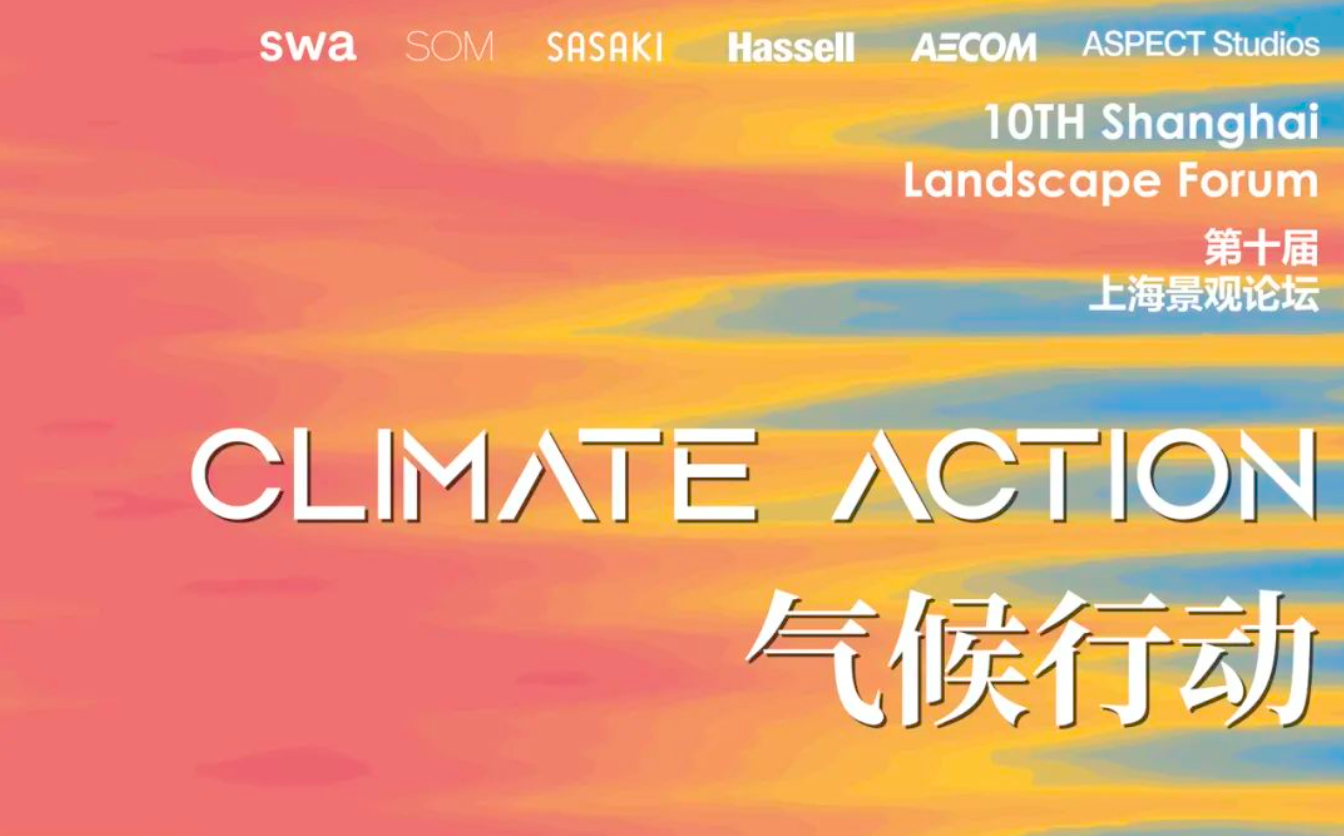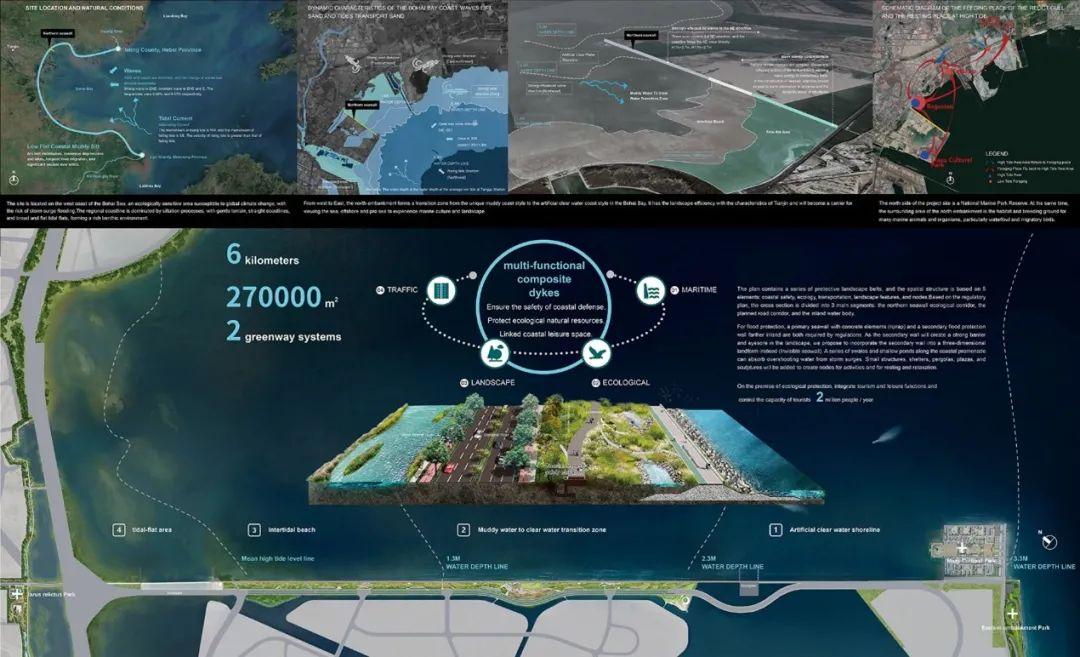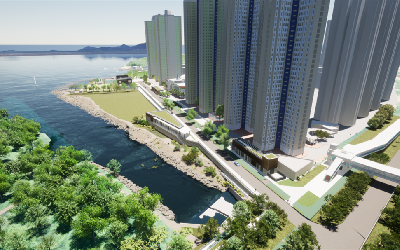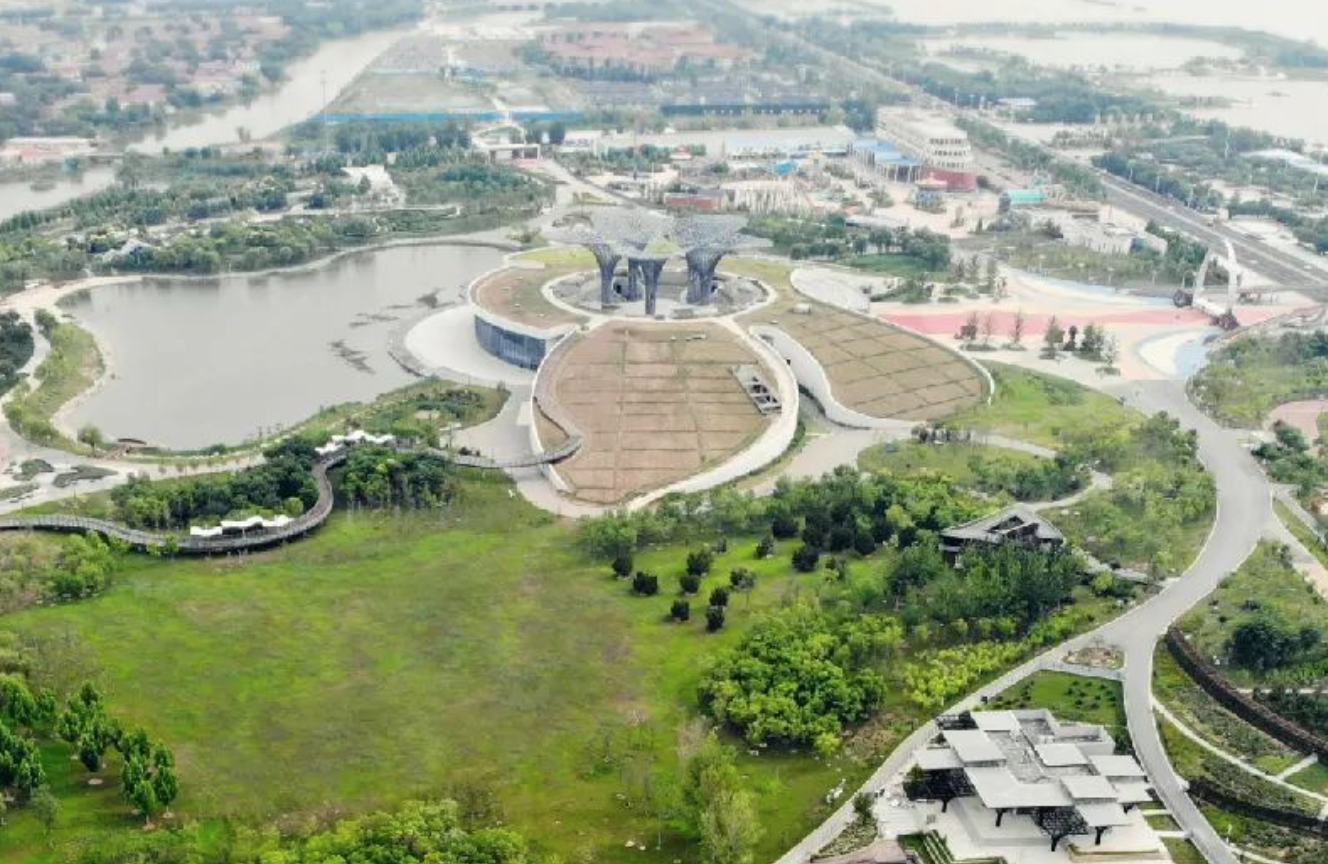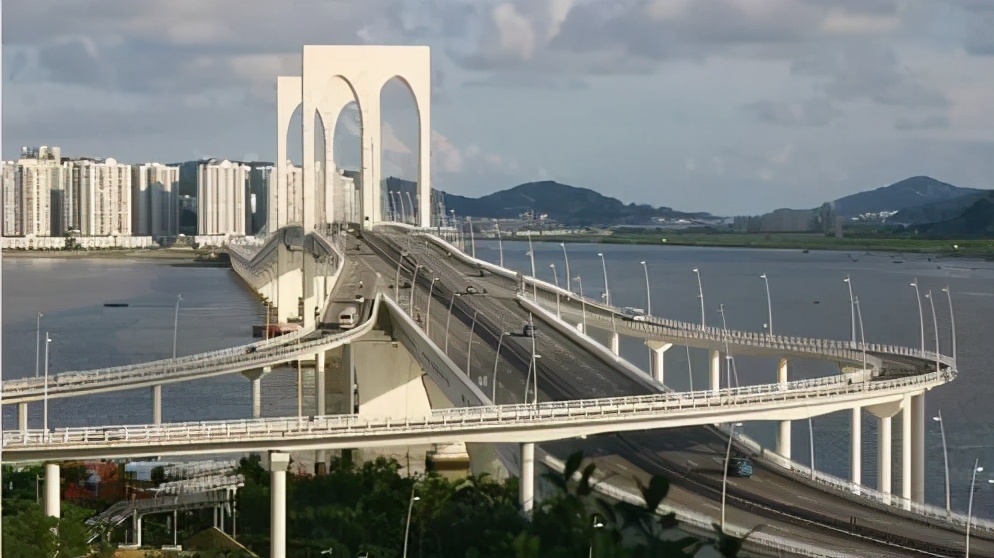
- 首 页 / HOME
- 关 于 / ABOUT
- 2025申奖 / ENTRY
- 获 奖 / AWARDS
- 活 动 / EVENTS
- 资 讯 / NEWS
- 合 作 / PARTNERS
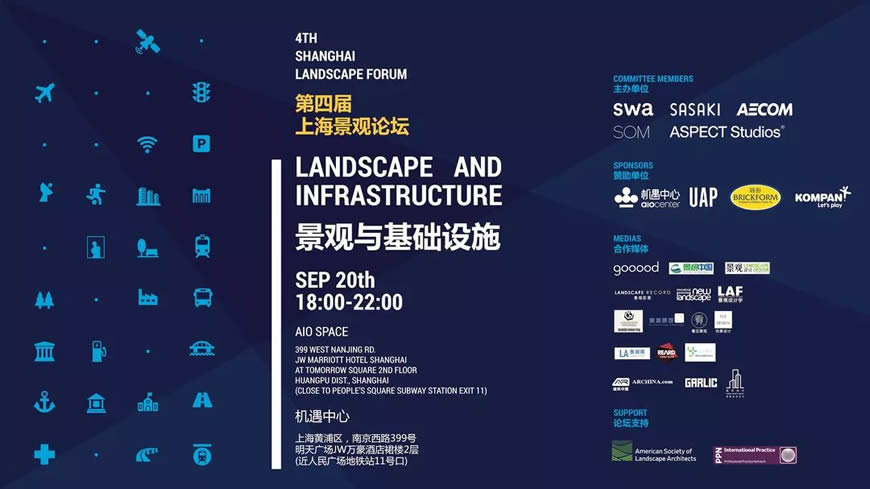
主题:景观与基础设施
LANDSCAPE AND INFRASTRUCTURE
上海景观论坛于2017年由Sasaki, AECOM 和 SWA 三家公司发起,之后ASPECT Studios, SOM等多家在中国开设办公室的国际性景观公司相继加入并参与组织。景观论坛旨在提升景观行业的影响力,并推进世界及行业的可持续发展。上海景观论坛的使命为:开拓新的实践,以催化设计创新、影响政策变革;提升公众对于景观重要贡献的认识;倡导景观行业,使之汇入社会进步的主流推动力。
Shanghai Landscape Forum was initiated by Sasaki, AECOM and SWA in 2017, and joined by other leading international landscape architecture practices operating in China, such as ASPECT Studios and SOM. The aim is to promote the landscape profession and build a more sustainable tomorrow, not only for the world around us, but also for the profession. The mission of Shanghai Landscape Forum is to pioneer new practices that result in design innovation and influence on policy transformation, raise public awareness of landscape architecture’s vital contribution, and advocate landscape architecture into the mainstream driving force for social progress.
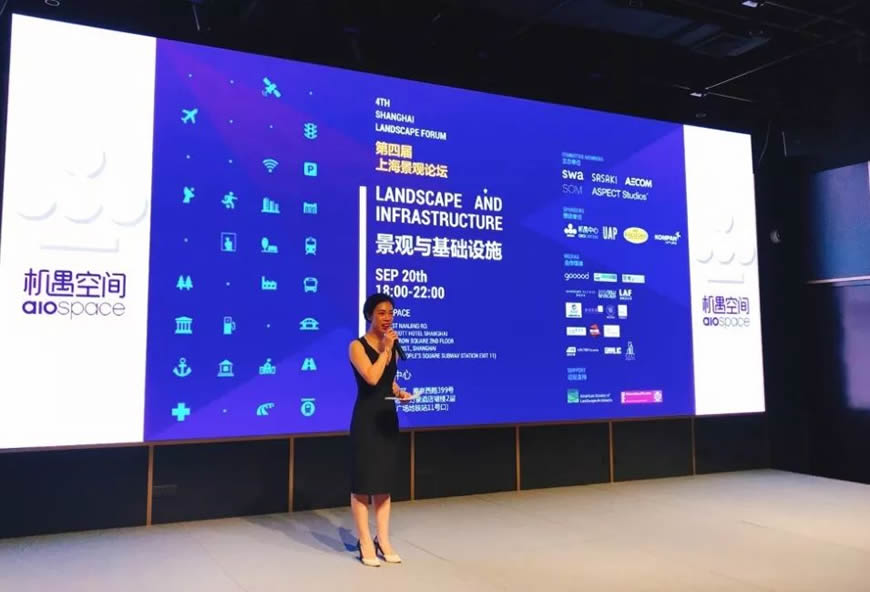
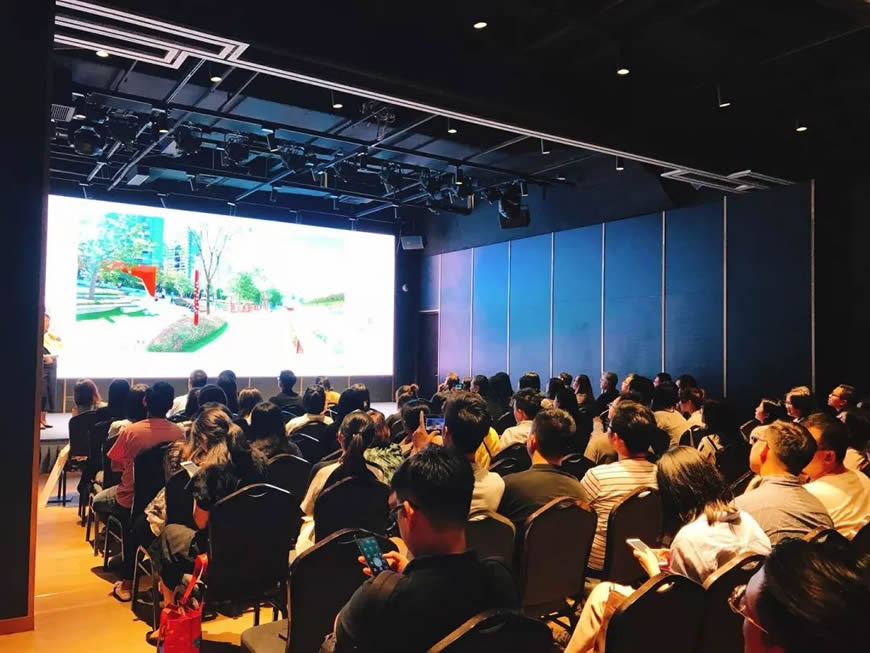 第四届上海景观论坛于2018年9月20日在上海机遇中心举办。演讲嘉宾基于自身在中国的实践经验,结合不同尺度下的景观案例,与观众分享并探讨了其设计团队对基础设施的理解,带领观众一同探索如何将基础设计和谐融入到自然与场地中,如何有效发挥基础设施的积极作用,如何运用新颖的设计理念与领先的设计方法来改善老旧基础设施,使其重新焕发光彩等话题。
第四届上海景观论坛于2018年9月20日在上海机遇中心举办。演讲嘉宾基于自身在中国的实践经验,结合不同尺度下的景观案例,与观众分享并探讨了其设计团队对基础设施的理解,带领观众一同探索如何将基础设计和谐融入到自然与场地中,如何有效发挥基础设施的积极作用,如何运用新颖的设计理念与领先的设计方法来改善老旧基础设施,使其重新焕发光彩等话题。
The Forth Shanghai Landscape Forum was held at Shanghai AIO Space on September 20th, 2018. The presenters shared and discussed their understanding of infrastructure through different scales of landscape projects, based on their practice in China. The presentations led the audiences to explore professional topics such as how to integrate infrastructure harmoniously with nature and site; how to make infrastructure work efficiently; and how to improve and bring new life to old infrastructures via creative design principles and pioneering design approaches.
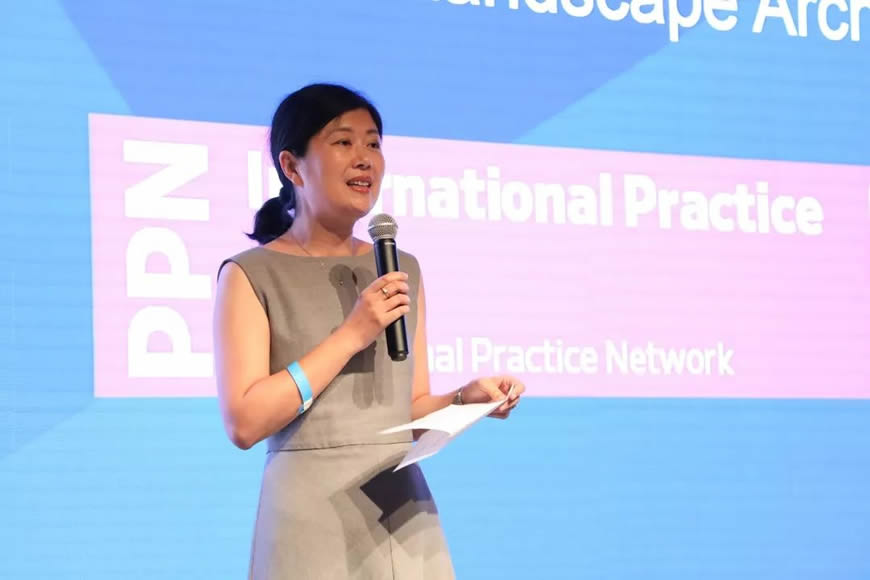
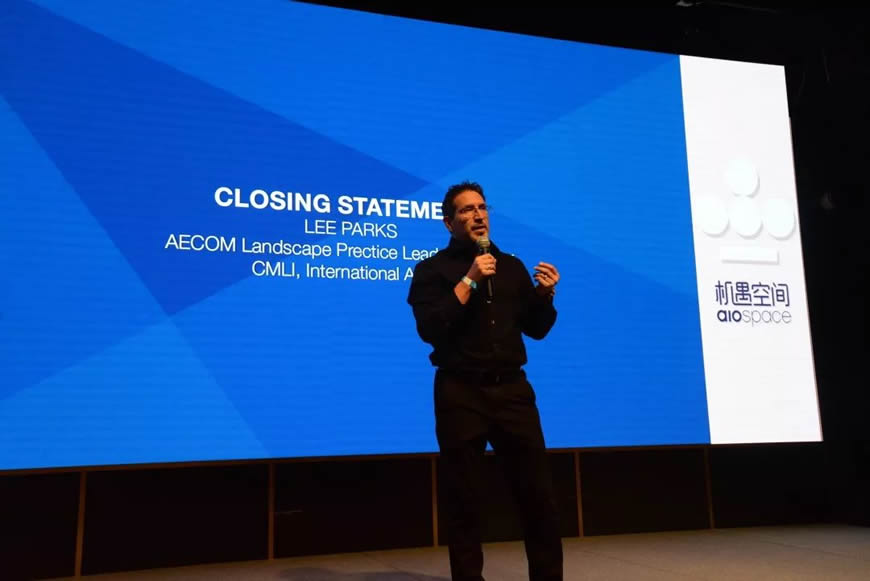 此次论坛由ASPECT Studios主持,邀请到来自SOM, ATKINS, SASAKI, SWA, AECOM和 HASSELL 共6家顶尖国际景观设计公司的演讲嘉宾。此外,18家行业内媒体受主办方邀请与其展开战略合作, 对此次活动进行前期宣传与后期报道。上海机遇中心、UAP、BRICKFORM和KOMPAN作为本次活动的赞助商出席,一起助力上海景观论坛。让我们一起来回顾当晚精采的演讲议程:
此次论坛由ASPECT Studios主持,邀请到来自SOM, ATKINS, SASAKI, SWA, AECOM和 HASSELL 共6家顶尖国际景观设计公司的演讲嘉宾。此外,18家行业内媒体受主办方邀请与其展开战略合作, 对此次活动进行前期宣传与后期报道。上海机遇中心、UAP、BRICKFORM和KOMPAN作为本次活动的赞助商出席,一起助力上海景观论坛。让我们一起来回顾当晚精采的演讲议程:ASPECT Studios acted as the host of this forum. Landscape architects from six international landscape design firms, including SOM, ATKINS, Sasaki, SWA, AECOM and HASSELL presented. 18 medias were invited to collaborate with the forum and report the event. Shanghai AIO Space, UAP, BRICKFORM and KOMPAN sponsored the forth forum. Let’s review some of the highlights of this event.
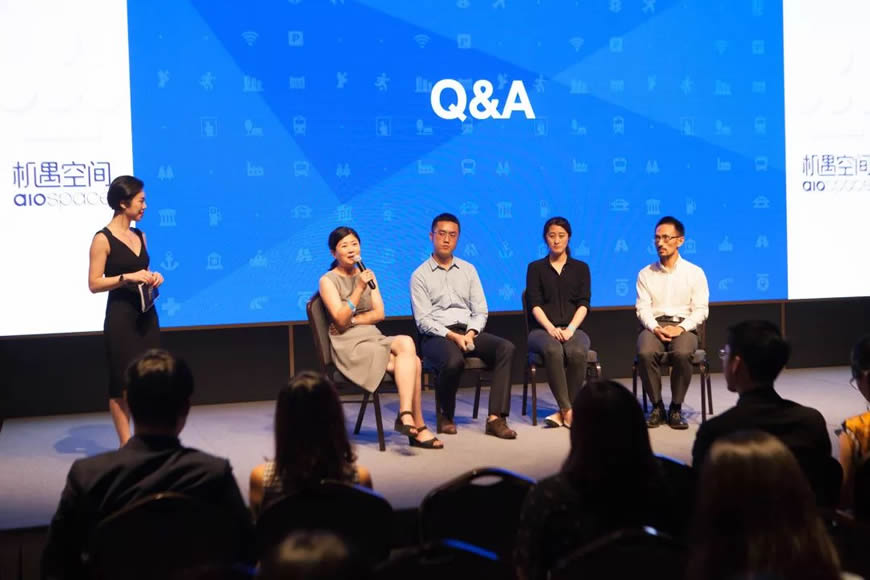
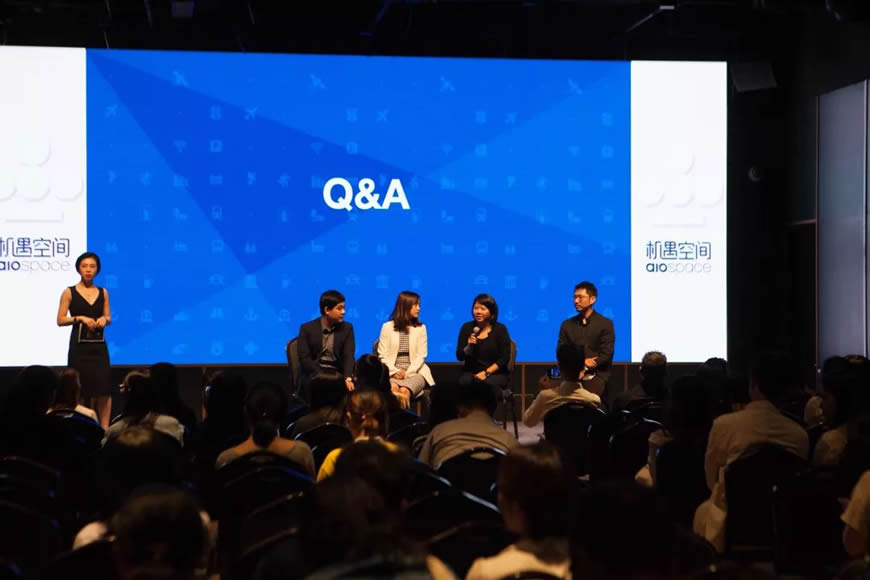
主题:大堤:基础设施或公园 - 黄河国家湿地公园设计项目
公司名:SOM
演讲嘉宾:余晗,资深景观设计师
Topic: Levee: Infrastructure or Park - Yellow River National Wetland Park
Company: SOM
Presenter: Han Yu, Senior Landscape Designer
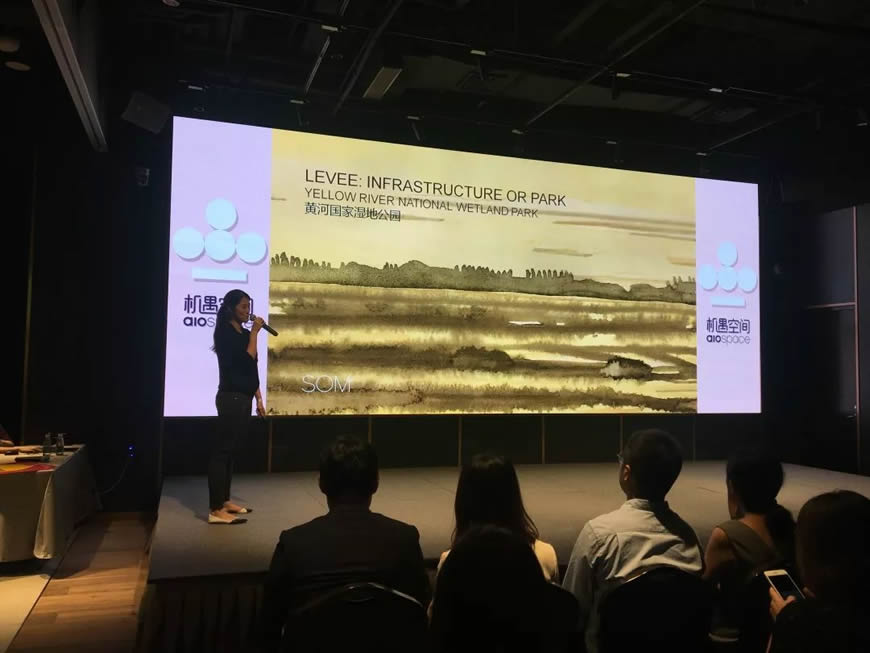 SOM的演讲以济南市的黄河大堤为例, 讨论了如何将公园系统整合到大型线性基础设施中。
SOM的演讲以济南市的黄河大堤为例, 讨论了如何将公园系统整合到大型线性基础设施中。
SOM’s presentation focuses on how a park system can be integrated into a large-scale linear infrastructure, in this case, the levee. The yellow river levee across Jinan city is used as the example.
伴随着济南北跨发展,黄河将成为济南流动的中央公园,成为一笔联系新兴的北部新旧动能转换先行区和济南历史城区的巨大财富。
With the City of Jinan expanding across the river, the Yellow River becomes the Flowing Central Park of Jinan, a great asset that connects the emerging new North City and the historic city.
项目从三个不同尺度研究了黄河大堤与堤坝间生态带。分别是 183 公里的市域尺度,30km 城区尺度和 4km 公园尺度。 市域尺度侧重于黄河的生态恢复的讨论。 城区尺度提供了一系列设计策略,将黄河走廊打造为公共开放空间,加强黄河与城市的联系。 这些设计策略在之后选定的启动区公园中得到具体反映,这是该研究的第三个尺度。
The levee and the ecological belt between the levee were studied at three different scales - the 183km regional scale, the 30km city scale and 4km park scale. The first scale focuses on ecological restoration of Yellow River. A series of strategies were provided at the second scale, to promote the yellow river corridor as public open space and enhancing the connection with the city. These strategies were later implemented in a selected start up park area, which is the third layer of the study.
黄河大堤一直以来都是纯粹的防洪基础设施,往往被视为障碍,或穿行的道路。 但在这个项目中,它被定义为一个景观元素,将黄河景观带中多样化的公园,森林,湿地和农田串联起来。 设计将大堤顶部道路通过交通和景观策略进行改造,例如在交通繁忙的城市地区将堤顶路改道绕行城市,在车流较少的区域加宽堤坝道路,为自行车和行人提供空间,同时在保障防洪安全的前提下,在堤围处设置广场,提供公园设施,创造更好的景观和活动区域。
The Yellow River levee was once a solely flood control infrastructure and has always been treated as a barrier, a road. However, in this project, it becomes a landscape element that leads to diverse parks, forests, wetlands, and farmlands. The levee top road is proposed to be transformed by transportation and landscape strategies, such as rerouting levee road when it is close to the city with heavy traffic, widening the levee road in the low traffic area to include bike and pedestrian belts, meanwhile creating plazas and providing park amenities at embankment, which will allow people better views and areas for activities without compromising the primary function of the levee.
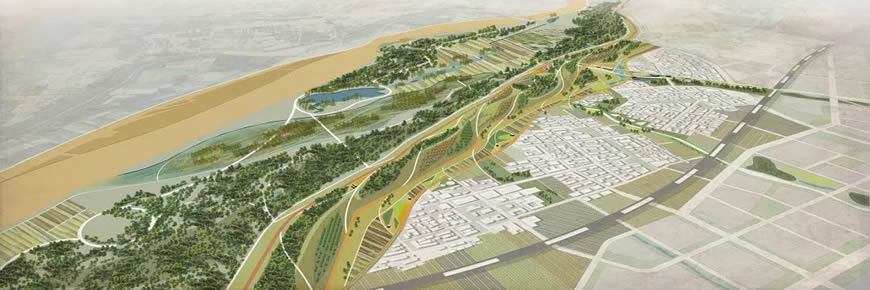

主题: 解构重组基础设施
公司名: ATKINS
演讲嘉宾: 夏源,阿特金斯中国区景观负责人
Topic: RECODE Infrastructure-A methodology of landscape infrastructure design
Company: ATKINS
Presenter: Yuan Xia, Associate of Atkins Mainland China
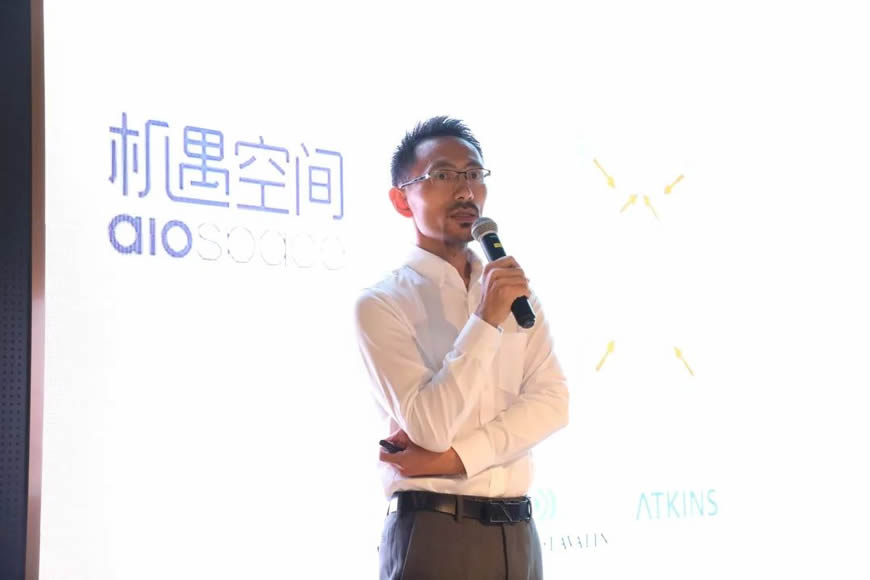
阿特金斯中国区景观负责人夏源代表公司出席了第四次上海景观论坛,并就论坛主题 “景观与基础设施“发表了《RECODE Infrastructure 解构重组基础设施》的演讲。
Xia Yuan, Landscape Associate of Atkins China, represented the company at the 4th Shanghai Landscape Forum and made a presentation on the theme "RECODE Infrastructure ".
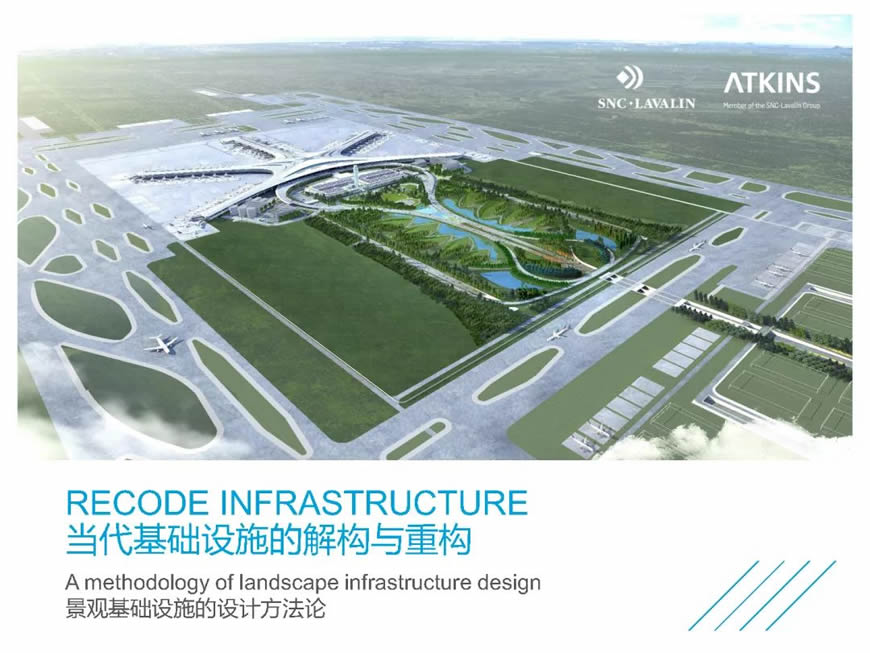
In his presentation, Xia yuan reviewed the characteristics of infrastructure during different historical periods, and recoded the development components of infrastructures, and then integrated the advantages of both agricultural infrastructures (ecological) and industrial infrastructures (efficient and comprehensive) via landscape approach, to recombine an elastic landscape infrastructure, which meets the needs of development of modern society, as well as to establish a new ecological framework for urban development.
他认为,这种拆解重组的过程(RECODE)可以看作是一个景观基础设施设计的方法论,并有六大原则组成,它们分别是 R-Reusable(循环利用),E-Effective(实际效用),C-Cultural(文化印记), O-Operational(便于管理), D-Diversified(复合功能), E-Economic(经济实用)。
The RECODE is treated as a methodology of landscape infrastructure design with 6 principles: Reusable, Effective, Cultural, Operational, Diversified, and Economic.
接着,夏源先生以阿特金斯设计的青岛胶东国际机场景观基础设施为案例,详细阐述了景观基础设施设计的六大原则:
Xia Yuan took Qingdao Airport - a landscape infrastructure designed by Atkins - as an example to explain the six principles in details:
1. Reusable(循环利用):景观基础设施设计应对场地内现存资源进行充分再利用。如青岛机场对表层土进行了剥离,用于未来的种植土回填;建筑及湖体施工挖出的土方用来塑造景观地形等。
Reusable: Design shall ensure that all resource within the site are at its utmost reuse rate. In this project, the design team reuses the existing surface soil and excavated soil to shape the landform.
2. Effective(实际效用):景观基础设施设计应在循环利用的原则基础上,结合最新的技术手段,超越灰色基础设施的效用,并保持生态的连续性。青岛机场的水系统收集净化设施与景观效果紧密结合,并在暴雨时作为滞洪及泄洪通道。
Effective: Given reusable principle, design shall apply latest technology when necessary to achieve higher efficiency and effectiveness than grey infrastructure does and ensure the continuity in ecology. Qingdao airport has designed a rainwater collection and purification system which well-integrated with landform, it will also be used as a detention area and flood drain channel during storm.
3. Cultural(文化印记):景观基础设施设计应融入地域文化,创造富有地域特色景观。如青岛机场的景观地形的塑造用融入最古老的” 齐 “字,并用波浪的形式阐释了地域文化特色。
Cultural: Design must take local cultural element into consideration and create a place with unique local feature. The cultural element in our project is expressed through modifying the shape of the ancient Chinese Character “QI” from two dimension to three dimension, and arranging such modification in a way that a series of wave form can be perceived, which brings additional marine cultural experience in Qingdao.
4. Operational(便于管理): 景观基础设施设计应提前考虑未来智能化的维护管理需求。 并结合灰色基础设施的维护管理要求统一设计。如青岛机场的植物设计以开敞的缓坡及块面组团种植为主,便于未来智能化的维护。智能灌溉的使用也将有效降低人力成本和灌溉用水量。
Operational: Design shall consider future AI maintenance and management needs as well as requirements of grey infrastructure. For example, spacious and gentle ramps are designed for the airport. It will provide convenience for future intelligent maintenance, for example intelligent irrigation. Such technology will also reduce labor costs and water consumption effectively.
5. Diversified(复合功能):景观基础设施设计应赋予灰色基础设施新的社会经济功能,将灰色基础设施转变成综合性的公共景观,促进人与场地的互动。 如青岛机场的中央花园地块,用景观空间处理手法统筹复杂的地上地下设施,预留了给排水和公共设施的接口,便于举办各种社交活动。
Diversified: Social, economic function shall be endowed by design to grey infrastructure, to transform grey infrastructure into multi-functional public landscape, and to encourage people interact with the space. The central garden is designed to transform the chaotic space into a new social hub, where people can interact and communicate with the site. The garden also provides utility service such water supply, plugs and other facilities to public to encourage various social activities.
6. Economic(经济实用):景观基础设施设计应注重与基础设施工程的合并,减少重复建设投资。 如青岛机场的景观水系统与市政管网融为一体,取代了部分传统管网,让自然做功,节省了管网系统的投资和维护成本。
Economic: Design shall fully merge landscape engineering with the different types of infrastructure, to minimize overlapping in investment and construction. Traditional concrete pipe network is replaced by new water collection and purification system, saving the investment and maintenance costs.
夏源先生希望通过“解构重组(RECODE)”的设计方法论,能够将中国基础设施的发展从效率至上的工业型基础设施,带入到融社会、经济、环境和城市空间形态为一体的生态型景观基础设施。这一转变,将进一步增加城市用地的社会、经济和生态价值,并提高基础设施的使用效能,促进中国经济的可持续发展。
By introducing RECODE methodology, Xia Yuan expressed his willingness to take the China current efficiency-oriented industrial infrastructure, into the next step: landscape infrastructure, a development which emphasizes on the integration of social, economic, environmental and urban spatial layout and ecology. This transformation would further improve the use of urban land in terms of social, economic and ecological value, enhance the effectiveness of infrastructure and catalyze the sustainable development of Chinese Economy.
演讲的最后,他强调绿色基础设施的设计一定要扬长避短,不能局限于如何最大程度的减少基础设施的负面效应,而应该聚焦于如何创造出更多的正面效应。
At the end of presentation, Xia Yuan emphasized that the design of landscape infrastructure shall focus on how to bring more positive effects the site rather than merely minimizing the negative effects.
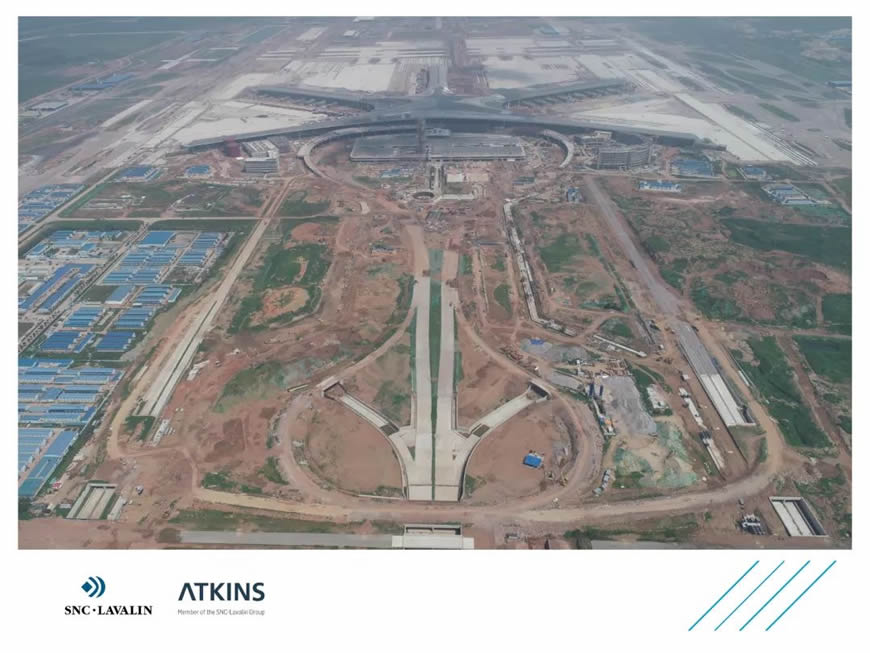
主题: 明日基础设施: 对中国未来基础设施的思考
公司名: SASAKI
演讲嘉宾: 曾志强,景观设计师
Topic: Infrastructure of Tomorrow: A speculation of future Chinese Infrastructure
Company: SASAKI
Presenter: Zhiqiang Zeng, Landscape Designer
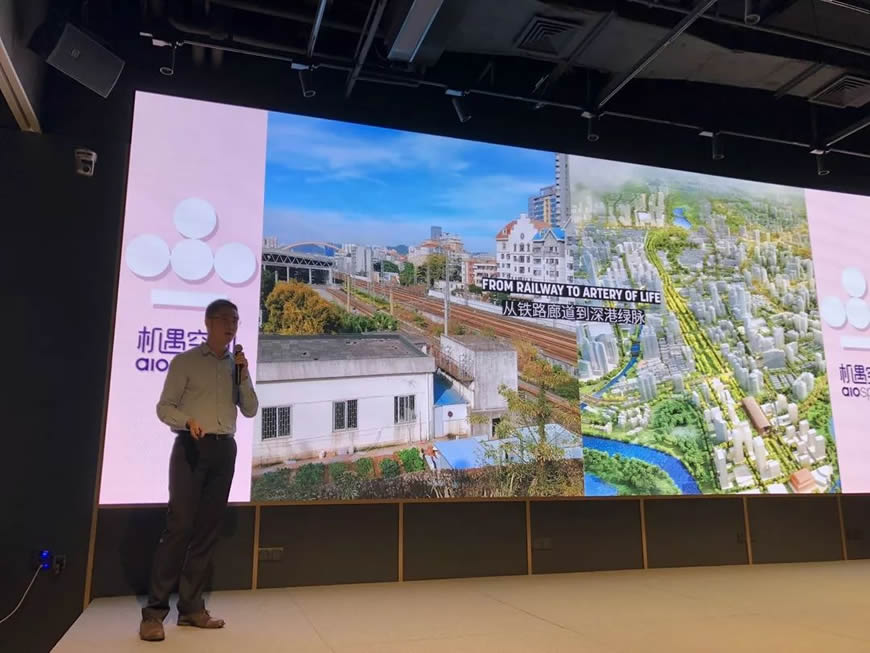 基于Sasaki在中国的实践,Sasaki上海办公室的景观设计师曾志强先生进行了题为“明日基础设施:对中国未来基础设施的思考”的演讲。演讲探讨了景观的重要作用,并对新时代的基础设施建设提出了预见性的洞察。他指出,景观自诞生以来便是基础设施概念中的一部分,但回顾过去40年,中国快速城市化的进程却造就了大量功能单一,与景观割裂的基础设施。
基于Sasaki在中国的实践,Sasaki上海办公室的景观设计师曾志强先生进行了题为“明日基础设施:对中国未来基础设施的思考”的演讲。演讲探讨了景观的重要作用,并对新时代的基础设施建设提出了预见性的洞察。他指出,景观自诞生以来便是基础设施概念中的一部分,但回顾过去40年,中国快速城市化的进程却造就了大量功能单一,与景观割裂的基础设施。
In light of Sasaki’s practices in China, Mr. Zhiqiang Zheng, a Landscape Designer at Shanghai Office, presented “Infrastructure of Tomorrow: A Speculation of Future Chinese Infrastructure” to discuss the critical role of landscape and provide speculative insights of the infrastructure in the new era. He pointed out that landscape was initially born as part of the infrastructure concept. However, a large amount of infrastructures constructed in the past 40 years during fast urbanization in China, are often single-used and separated from landscape.
从割裂到融合
演讲中强调当下中国基础设施的建设正在经历至上而下的根本性转变,基础设施的综合功能和景观属性逐渐成为被关注的焦点,包括对生态服务、公共空间休闲、文化促进、城市开发催化等等的多层次整合。而这一转变体现在演讲对上海世博文化公园和罗湖“三横四纵”街道改造这两个案列的解析中,包括设计团队如何治理过去城市化遗留问题和面向未来提升城市空间品质。
From Separation to Integration
The presentation highlighted that the infrastructure in China was undergoing a fundamental transformation from top to bottom, and that the integrity, multiplicity and the landscape attributes of infrastructure have drawn a lot of attention—including the integration of ecological service, public recreation, cultural stewardship, development catalyst, etc. The transformation could be seen in the cases of Shanghai EXPO Cultural Park and Luohu Streetscape Renovation, in which the design remediated the issues created by the former development and improved the urban space quality for the future.
案例一:上海世博文化公园
针对治理过去城市化过程中所遗留的城市疾病,演讲以上海世博文化公园为例,指出集多功能于一体的景观将成为新型基础设施,通过生态修复来建立安全的环境格局,同时提供城市休闲活动的空间并整合提升已有的文化资源。这种新型基础设施的建设也积极反映了上海建立全球城市的展望。
Case Study I: Shanghai EXPO Cultural Park
Regarding remediating the “city disease” generated in the past urbanization, the presentation took Shanghai EXPO Cultural Park as an example, pointing out that landscape integrated with multiple functions will transform into a new type of living infrastructure. Through eco-remediation to improve the environmental safety and create urban recreational space, while integrating and promoting the existing cultural resources. The new type of infrastructure embodies the ambition of Shanghai, in making of a distinguished global city.
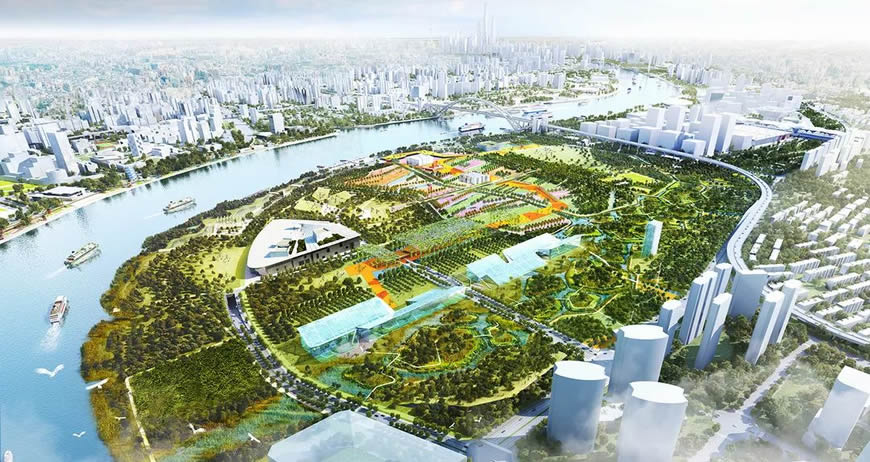
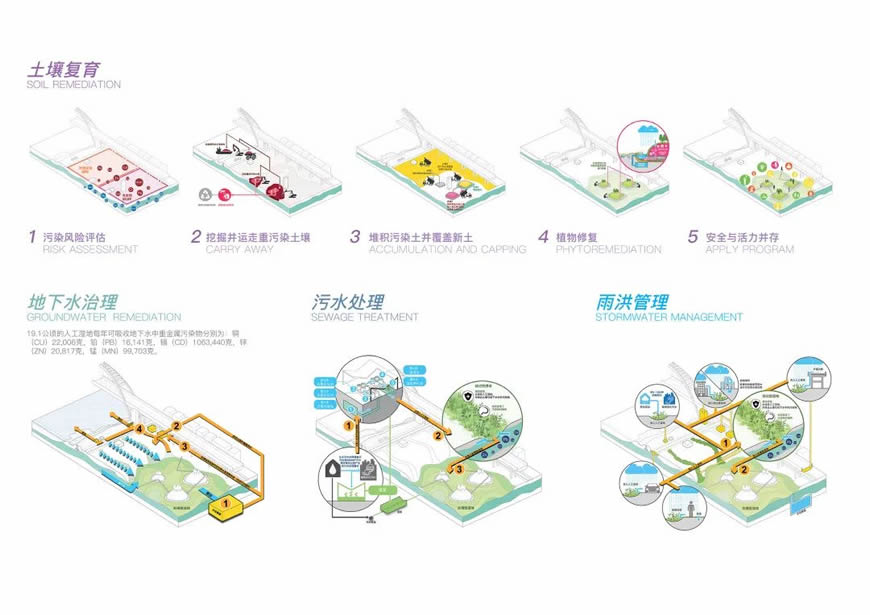 案例二:罗湖“三纵四横”街道改造
案例二:罗湖“三纵四横”街道改造
通过罗湖“三横四纵”街道改造这个案例,曾志强先生详尽地阐述了如何将原有单一功能的交通通道将转化为城市新的公共生活界面,形成新型基础设施。这样的转变使得这些基础设施成为带动周边城市更新的催化剂,并助力于城市更新的过程中的城市空间品质提升。
Case Study II: Luohu Streetscape Renovation
Zeng elaborated on the Luohu Streetscape Renovation project and its approach of using landscape to transform single-used transportation corridors into new types of infrastructure and create space for urban life. The renovation will become the catalyst to transform the district and improve the urban space quality in the urban renewal process.
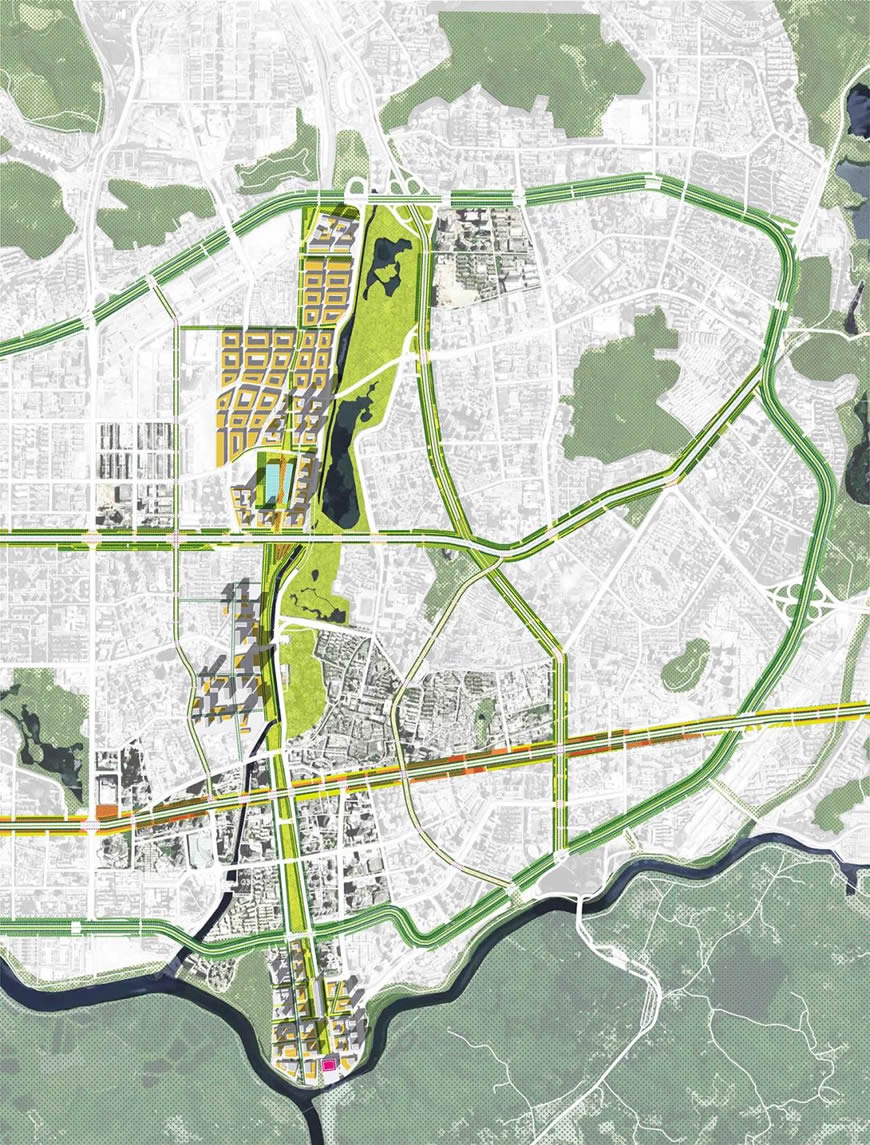
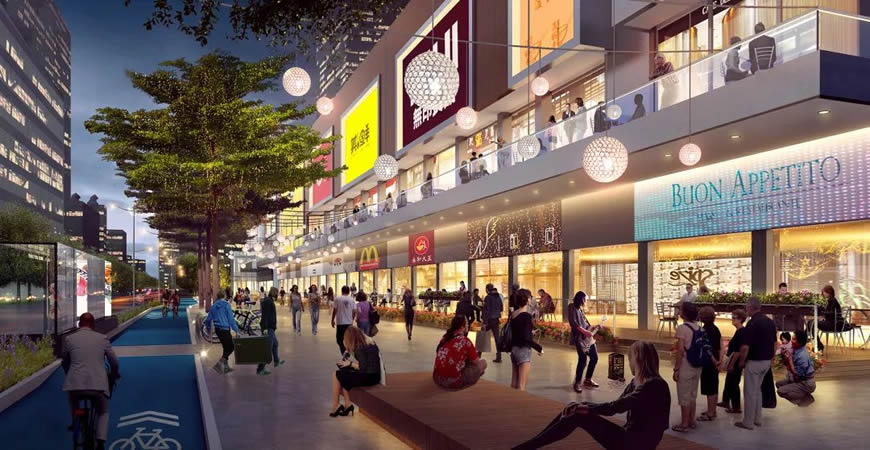 最后演讲作出了预见性的总结,认为中国的城市正在重新审视过去单一功能、和景观割裂的基础设施,从而定义全新的基础设施;新型基础设施将是高度综合性的,同景观紧密结合的;而这些全新的基础设施也将会同过去的基础设施一样,持续地塑造中国城市的新面貌。
最后演讲作出了预见性的总结,认为中国的城市正在重新审视过去单一功能、和景观割裂的基础设施,从而定义全新的基础设施;新型基础设施将是高度综合性的,同景观紧密结合的;而这些全新的基础设施也将会同过去的基础设施一样,持续地塑造中国城市的新面貌。
The presentation has made some speculative conclusions at the end - Chinese cities are rethinking its single-used, disintegrated infrastructures in the past and redefining the infrastructures in the new era; new types of infrastructure will be highly multi-functional and integrated with landscape; new types of infrastructure, as much as their precedents, will continue to define the image of cities of tomorrow.
主题:绿色引擎 - 当代中国景观基础设施实践
公司名:SWA
演讲嘉宾:
刁荆石, 景观设计师
陆诗蕾,景观设计师
Topic: Green Engine – Landscape Infrastructure Practices in Contemporary Chinese Urbanism
Company: SWA
Presenters:
Jinshi Diao, Landscape Designer
Shilei Lu, Landscape Designer
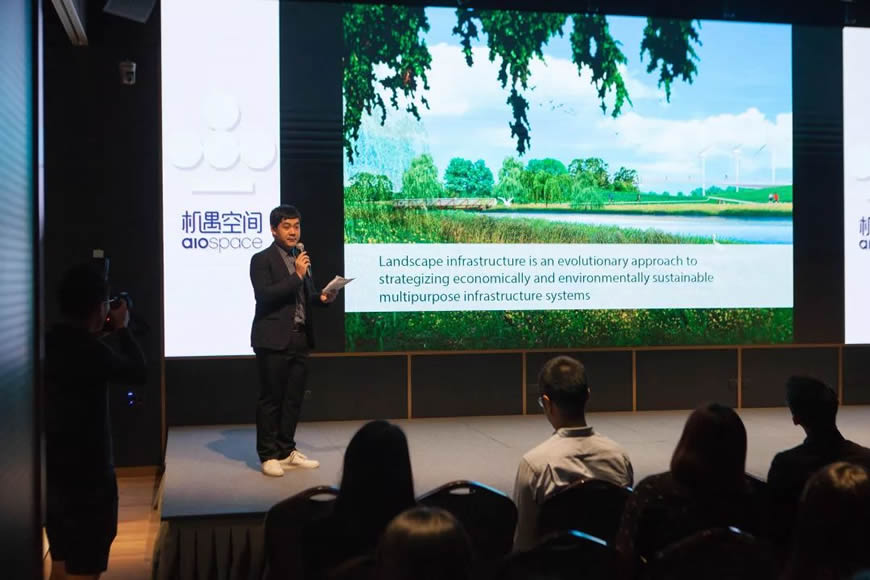
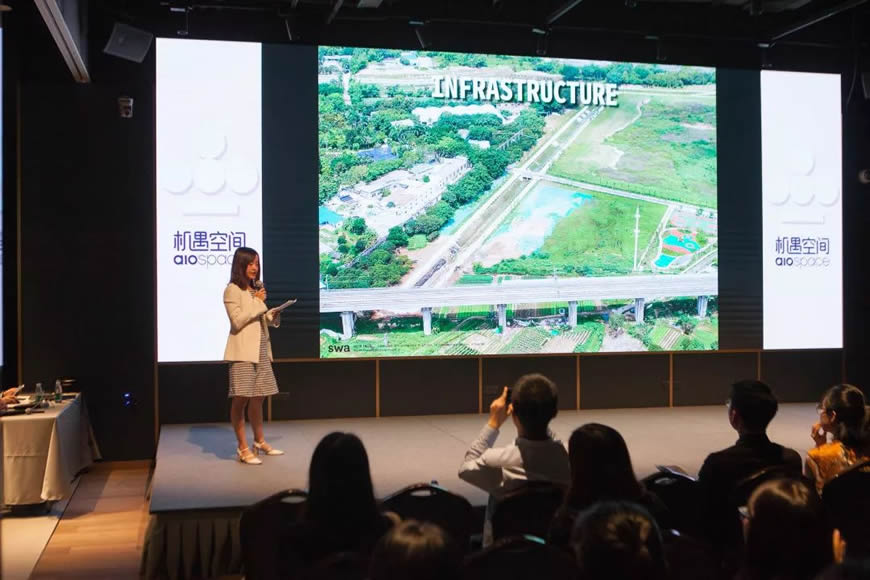 景观基础设施是当下极具革命性的设计措施,通过策略性的规划设计,将产生在经济与环境领域同时具有高度可持续性的复合基础设施系统。SWA 景观设计师刁荆石与陆诗雷通过近期一个具有典型意义的景观实践 – 深圳光明小镇森林运动公园,思考当代中国城市化进程中景观基础设施实践的价值与困境。
景观基础设施是当下极具革命性的设计措施,通过策略性的规划设计,将产生在经济与环境领域同时具有高度可持续性的复合基础设施系统。SWA 景观设计师刁荆石与陆诗雷通过近期一个具有典型意义的景观实践 – 深圳光明小镇森林运动公园,思考当代中国城市化进程中景观基础设施实践的价值与困境。
Landscape infrastructure is an evolutionary approach to strategizing economically and environmentally sustainable multipurpose infrastructure systems, reversing urban sprawl and regenerating our invaluable natural resources. During landscape infrastructure practices, the challenge and difficulty are varied according to different contexts and different types of work. Two SWA designers – Jingshi Diao and Shilei Lu, presented SWA’s recent project - Shenzhen Guangming Forest Park, to show their thoughts on landscape infrastructure practices in contemporary Chinese urbanism.
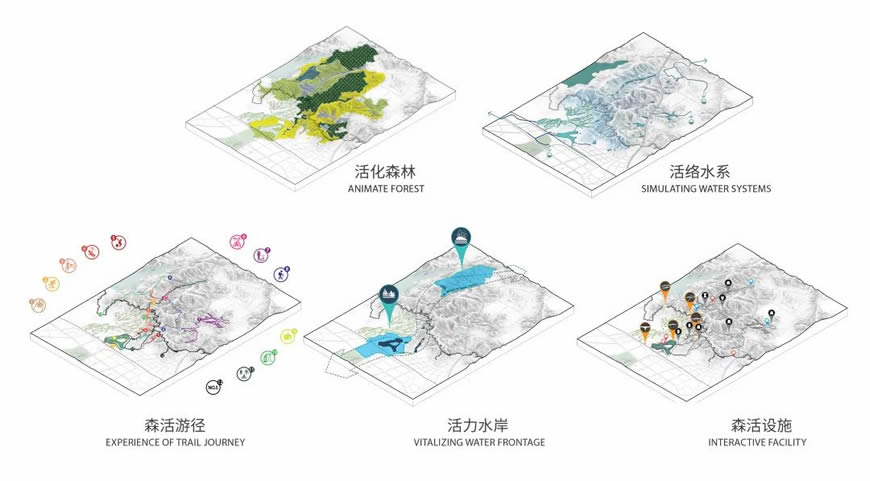
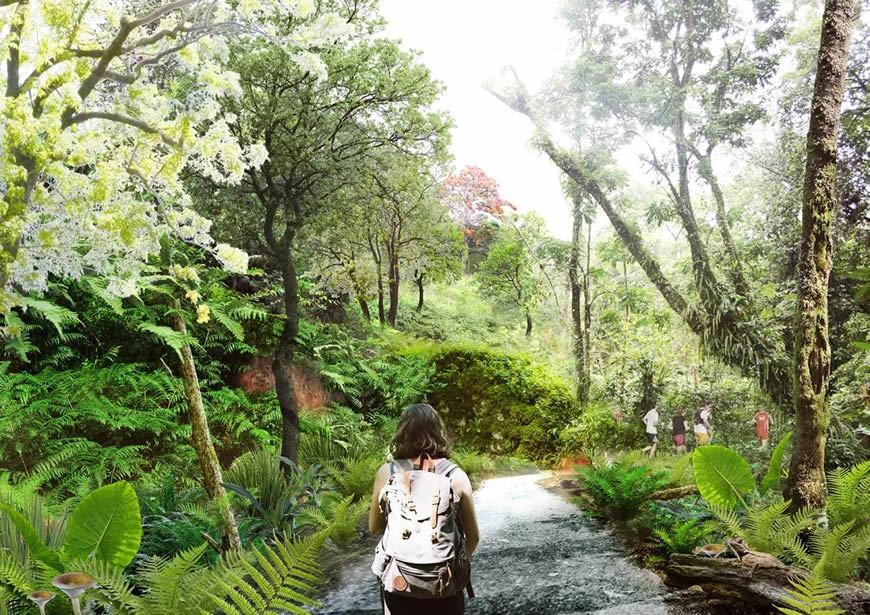
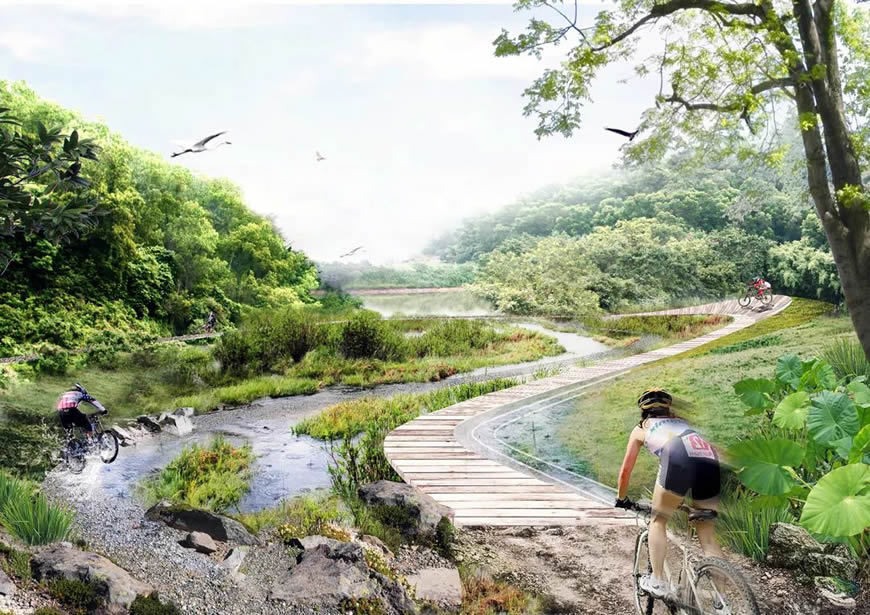
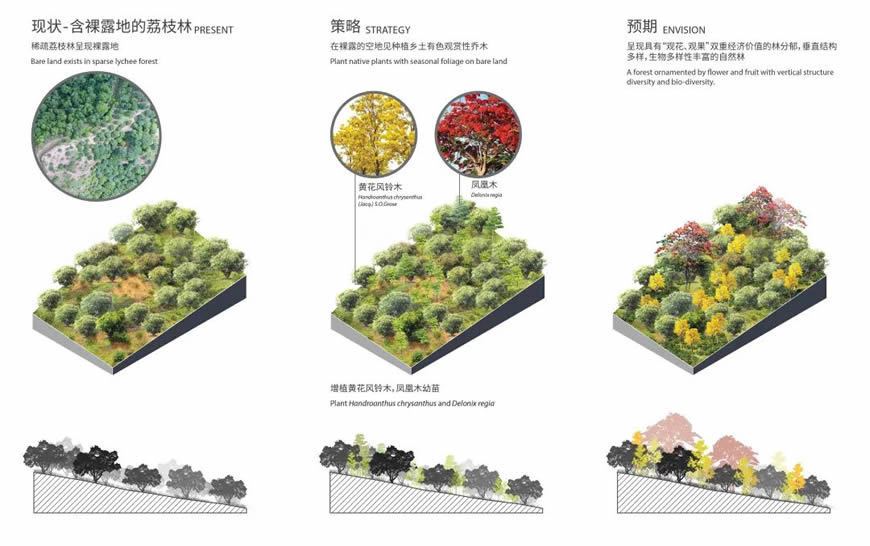
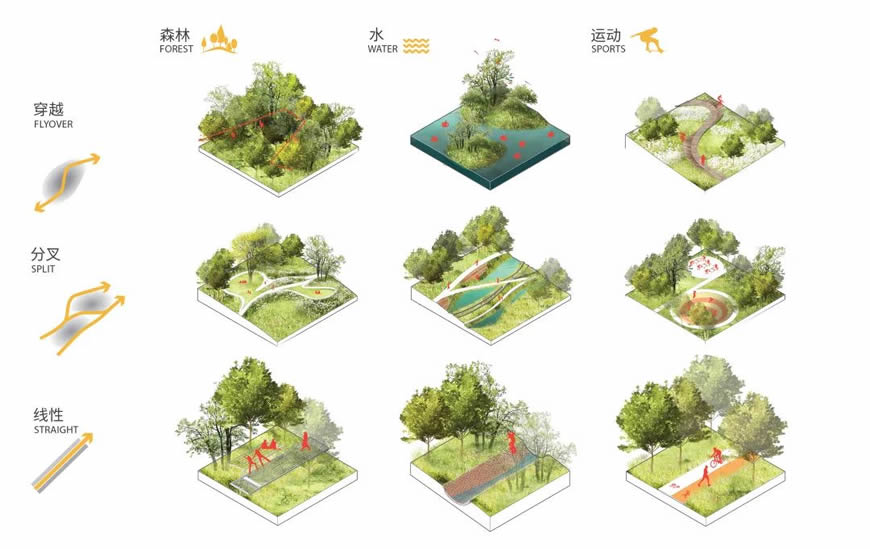
主题: 隐现基础设施
公司:AECOM
演讲嘉宾:
徐士轩,主管,景观部门
苏裕敏,主管,景观部门
Topic: (IN)Visible Infrastructure
Company: AECOM
Presenters:
ShihHsuan Hsu, Associate, Landscape
Agnes Soh, Associate, Landscape
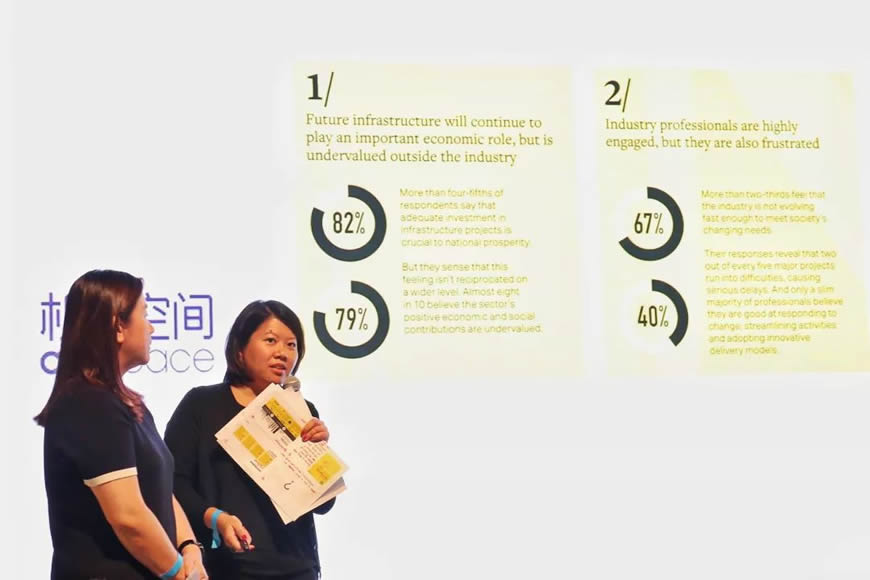 景观美化我们的环境,基础设施支撑我们的城市生命。
景观美化我们的环境,基础设施支撑我们的城市生命。
基础设施推动经济增长,提高生活质量。 但目前的基础设施发展速度较缓慢,未能完全满足目前及未来城市化的需求。AECOM 前不久发布的第一份全球研究报告《基础设施的未来》中,行业专业人士一致认为,我们需要创新的解决方案和新颖的技术手段,协助交付更为安全、更韧性、更灵活的基础设施。 随着中国大规模发展基础设施引领世界,我们也希望在这关键时刻,探讨景观建筑师如何为建设未来韧性基础设施做出贡献。
Infrastructure powers economic growth and improves quality of life. But our networks and systems are straining to keep up with current and future needs. Industry professionals from AECOM’s “Future of Infrastructure” global research agree that fresh approaches and innovative solutions are needed to address urgent and complex challenges we face. As China leads the world with its massive infrastructure development, we want to discuss how landscape architects can contribute towards building resilient infrastructure of the future.
头屯河沿岸综合整治,顺应自然的河川整治,把提高新疆昌吉市民,生命生活和治理环境工作作为项目标的两大根本任务。头屯河因多年采砂等原因,现河道两侧多为荒地和工业用地,河型破坏严重,缺乏协调管理,导致洪水和财产损失。 通过本次项目对河道的修复,当地政府希望将长达 13.4 公里的城市河滨改造成生态景观廊道。头屯河作为昌吉的东大门,按照两河流域发展理念,致力将头屯河打造成核心生态景观绿廊,利用一湖、两带的水系管理理念及多样性的水体,并连动周边都市用地來强化城市门戶形象,藉由多层整合自然景观与生态系统的交织、城市界面与自然生态系统的博奕,使头屯河成為一个蓝绿交织的串连珍宝。
The Toutun River Eco-Corridor is an example of such – how rivers can become a city’s landmark and infrastructure. Toutun River was damaged by years of haphazard sediment excavation and lacked coordinated management, leading to floods and property damage. Along with river restoration, the local government wanted to transform the 13.4km-long urban riverfront into an ecological landscape corridor, creating a postcard image of Changji’s eastern gateway from Urumqi.
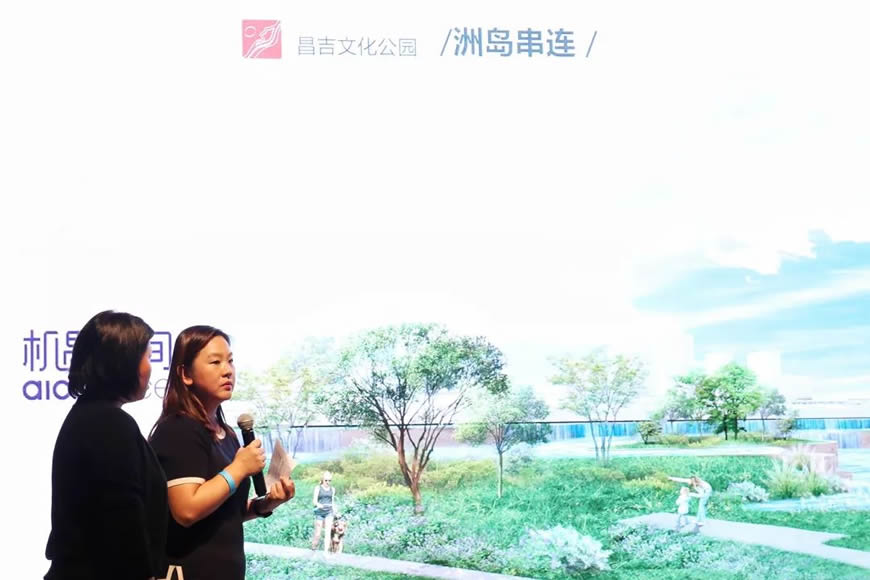 联合中国市政工程西北设计研究院,AECOM 的水利工程师,总体规划师,生态学家和景观设计师组成跨学科团队,将水资源管理、生态修复和开放空间设计紧密结合,旨在恢复和维持河流的自然生态。以自然生态景观带动城市发展为契机,结合当地季节河流生态系统可持续性为原则,创造绿链,强调核心生态景观绿廊,改善场地的生态环境和增加绿色覆盖。在提升水力综合治理技术上,以水分配,水安全,水清澈,水生态为目标。在三个城市间缝合两岸城市界面,以达到两岸共赢和谐的新疆一体化平衡发展,同时创造多样化的滨水体验和娱乐,以加强昌吉的城市形象。
联合中国市政工程西北设计研究院,AECOM 的水利工程师,总体规划师,生态学家和景观设计师组成跨学科团队,将水资源管理、生态修复和开放空间设计紧密结合,旨在恢复和维持河流的自然生态。以自然生态景观带动城市发展为契机,结合当地季节河流生态系统可持续性为原则,创造绿链,强调核心生态景观绿廊,改善场地的生态环境和增加绿色覆盖。在提升水力综合治理技术上,以水分配,水安全,水清澈,水生态为目标。在三个城市间缝合两岸城市界面,以达到两岸共赢和谐的新疆一体化平衡发展,同时创造多样化的滨水体验和娱乐,以加强昌吉的城市形象。
In collaboration with our local design partner, AECOM’s cross-disciplinary team of water engineers, master planners, ecologists and landscape architects integrated water management with network of open spaces and programs, designed to restore and sustain the river’s natural ecology, network of parkland to improve the site’s ecological environment and increase green cover, while creating diverse waterfront experiences and recreation to strengthen the city’s urban image.
项目跳脱传统工程设计手法,以顺应自然为设计核心理念,打破了景观与基础设计工程之间的界限,展开了不同学科之间的合作及对话。当下,基础设施行业正面临一个关键时刻。项目所需解决的问题日渐复杂,基础设施行业本身也需要大步前进,突破界限,与多专业共同描绘一幅完善韧性基础设施、助力未来可持续发展的蓝图。景观美化我们的环境,也赋予基础设施可持续的绿色生命。景观是绿色基础设施,也是城市社会及人文绽放的载体。
This project is pivotal for its approach, an important work that opens up the dialogue between landscape architecture and engineering, and collaboration between different disciplines. As projects become more complex, landscape architects are taking a lead to question and collaborate, to push boundaries, in order to deliver innovative solutions. Landscapes that serve as ecological infrastructure, and also expressions of social and cultural infrastructure within our cities.
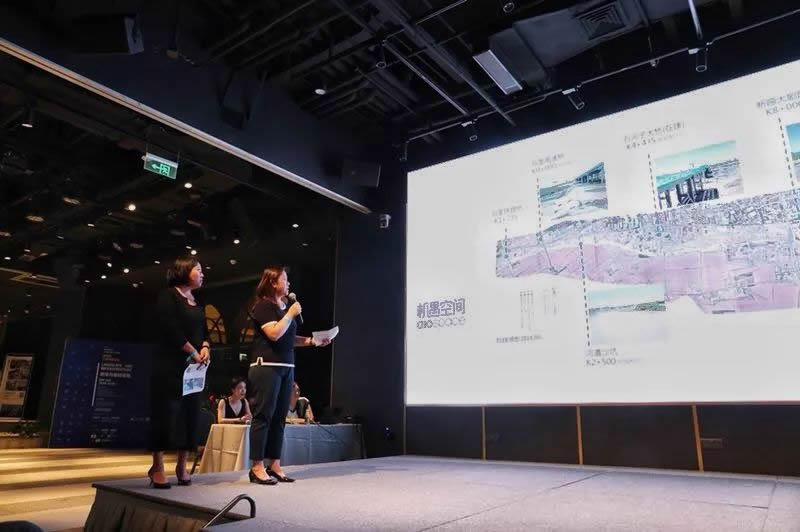
主题: 当景观成为基础设施
公司:HASSELL
演讲嘉宾 :林世扬,资深设计主管
Topic: Landscape as infrastructure
Company: HASSELL
Presenters: Sean Lin, Senior Associate
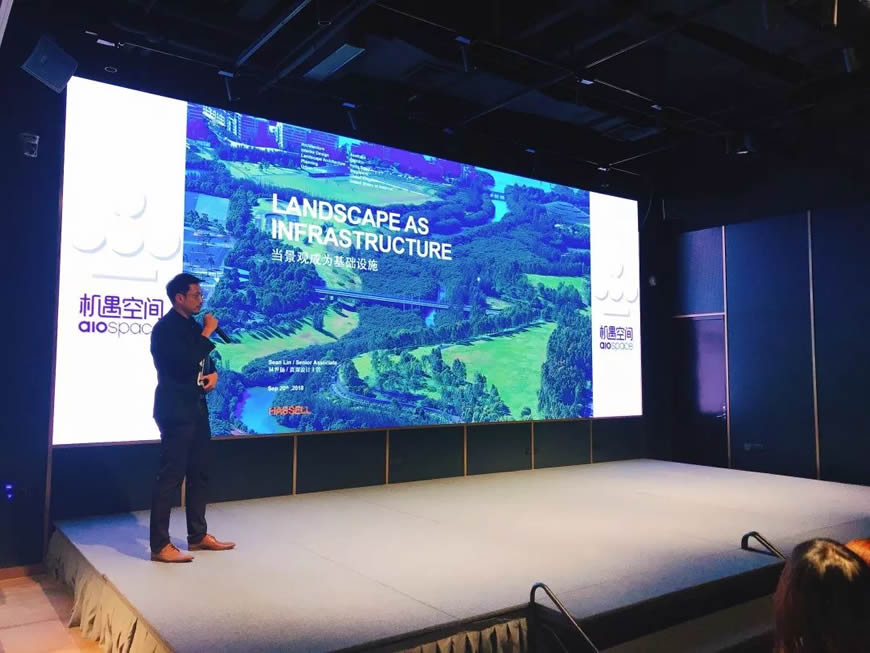 基础设施的建设不仅推动着城市的经济成长,也为城市的初期发展提供了框架与动能。近年来,景观基础设施的推动,将传统意义上单一功能的市政工程融合到更加综合更加复杂的城市公共体系之中。
基础设施的建设不仅推动着城市的经济成长,也为城市的初期发展提供了框架与动能。近年来,景观基础设施的推动,将传统意义上单一功能的市政工程融合到更加综合更加复杂的城市公共体系之中。
Investment into infrastructure not only promotes the economic development of a city but also builds a framework and gives momentum to a city in its initial stages. In recent years, the development of landscape infrastructure has integrated conventionally single-functional civic projects into more complex and comprehensive urban public systems.
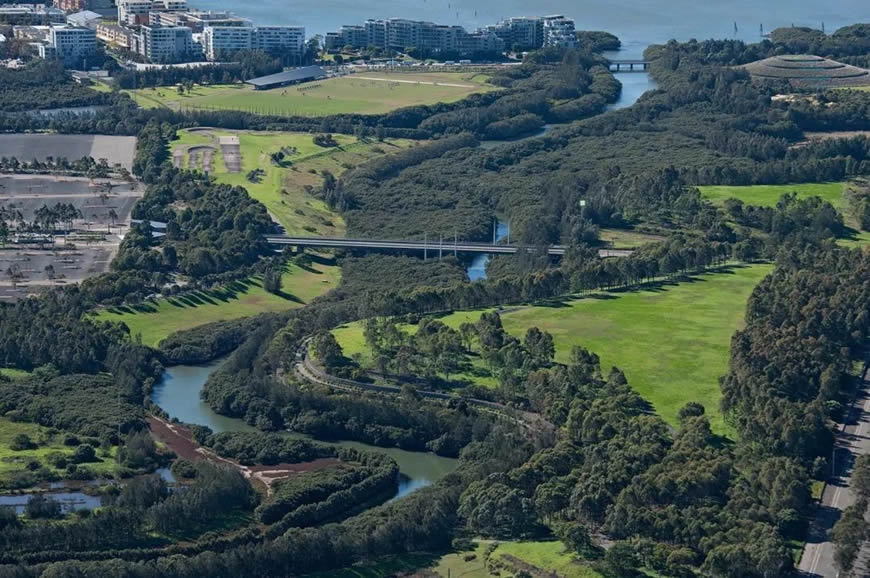 来自HASSELL的资深设计主管林世扬先生受邀参加本次论坛,以独特的切入点——景观作为基础设施的价值是其融合了满足城市健康发展的主要范畴,结合案例,探讨在强调联系与效率的城市功能外,着重考虑基础设施建设过程中的生态修复、公共意识再造与城市美学提升。
来自HASSELL的资深设计主管林世扬先生受邀参加本次论坛,以独特的切入点——景观作为基础设施的价值是其融合了满足城市健康发展的主要范畴,结合案例,探讨在强调联系与效率的城市功能外,着重考虑基础设施建设过程中的生态修复、公共意识再造与城市美学提升。
HASSELL Senior Associate Sean Lin joined the Forum held in Shanghai, presenting on the value that landscape infrastructure brings to healthy urban development. In addition to the emphasis on connection, efficiency and other city functions, landscape infrastructure focuses on eco-restoration, re-building public awareness about the importance of nature and improving urban aesthetics during the process.
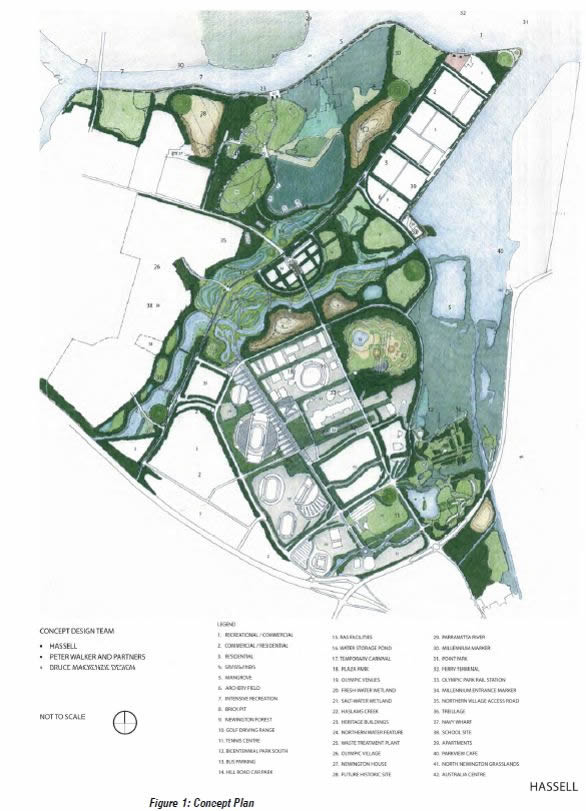 与中国的许多“以任务为导向的”项目不同,我们从悉尼千禧公园项目中可以看到景观作为基础设施的不断进化。建成十年后一系列的回顾及审视表明,公园对场地的自然修复、公共空间的活力以及城市形象等方面创造了无穷的价值,并为城市留下了宝贵的财富。悉尼千禧公园现仍是城市的重要公共空间,使悉尼成为了更好的城市。
与中国的许多“以任务为导向的”项目不同,我们从悉尼千禧公园项目中可以看到景观作为基础设施的不断进化。建成十年后一系列的回顾及审视表明,公园对场地的自然修复、公共空间的活力以及城市形象等方面创造了无穷的价值,并为城市留下了宝贵的财富。悉尼千禧公园现仍是城市的重要公共空间,使悉尼成为了更好的城市。
Unlike most of the ‘task-driven’ projects in China, the case study of Millennium Parklands in Sydney represents an ongoing evolution of landscape infrastructure. Since their completion, the Parklands have created incredible value and legacy through elements like restoration of nature, an enabler of vibrant community activity and a key creator of city identity. Millennium Parklands play a vital role in making Sydney a better city.
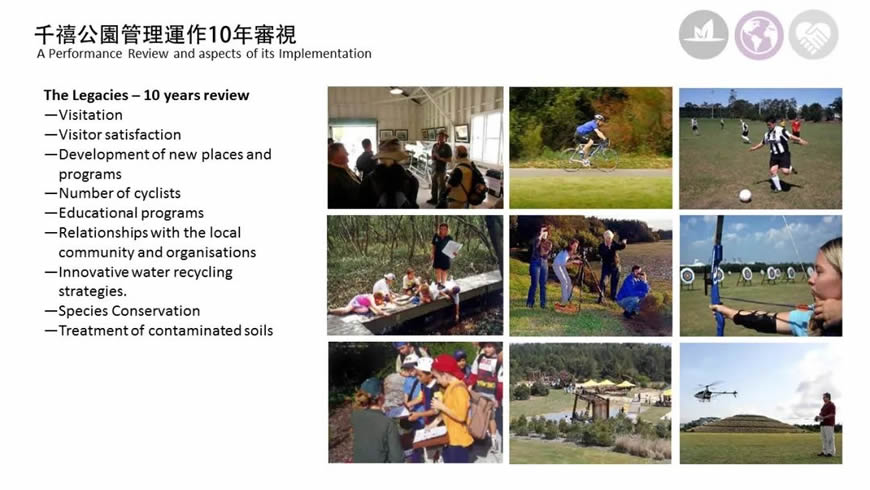 上海景观论坛还将在今年10月23日至24日的Greenbuild China大会上向公众做出介绍。
上海景观论坛还将在今年10月23日至24日的Greenbuild China大会上向公众做出介绍。
The Shanghai Landscape Forum will be introduced at this year’s Greenbuild China event, which will be held from 23rd to 24th Oct. 2018.
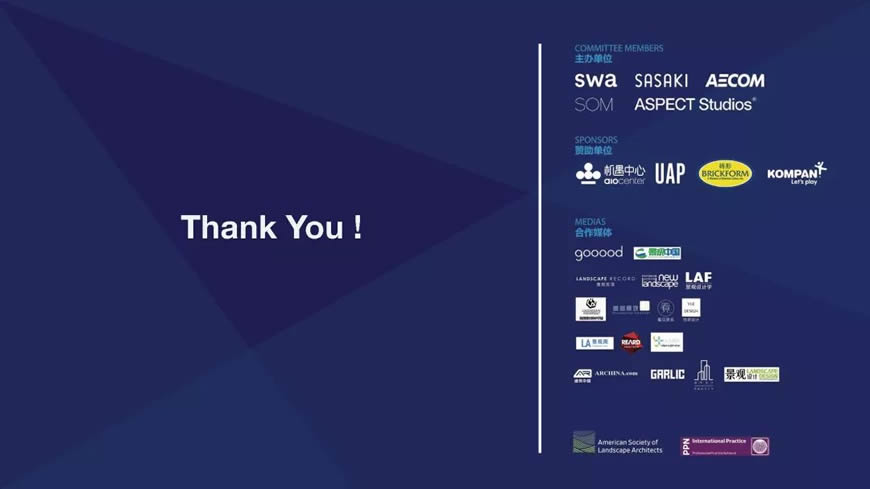
现场花絮
